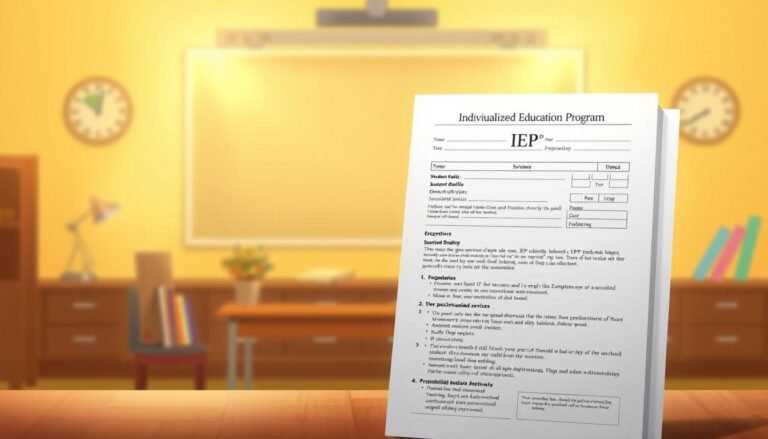
Building Bridges: Fostering Self-Confidence in Kids with Learning Challenges
Introduction
Every child deserves to feel confident and capable, but for kids facing learning challenges, building that self-confidence can seem like an uphill battle. Imagine a child struggling with reading, whose heart sinks every time it’s time for a group activity. This is not just about academics; it’s about self-worth, social interactions, and the very foundation upon which a child builds their future. In this article, we will explore the essential strategies and proven methods for Building Bridges: Fostering Self-Confidence in Kids with Learning Challenges. Together, we will learn to pave a supportive pathway that helps these children thrive, not just in school but in life.
Understanding Learning Challenges
What are Learning Challenges?
Learning challenges encompass a range of difficulties that can affect how a child processes information. These may include dyslexia, ADHD, dyscalculia, and other conditions that interfere with academic achievement and self-esteem. Yet, it’s vital to understand that learning challenges do not equate to a lack of intelligence. Many children with learning challenges are just as bright and capable as their peers; they simply process information differently.
The Impact on Self-Confidence
Low self-confidence is a common byproduct of learning challenges. Children may internalize their struggles, leading to feelings of frustration, anxiety, and inadequacy. This can create a cycle that negatively affects their academic performance and social relationships. By Building Bridges: Fostering Self-Confidence in Kids with Learning Challenges, we can disrupt this cycle and create environments where these children can shine.
Building Bridges: Fostering Self-Confidence Strategies
Creating a Supportive Environment
A supportive environment is crucial for fostering self-confidence. This includes both home and school settings. Parents and educators can implement strategies that celebrate strengths while addressing challenges.
Case Study: Research-Based Interventions
A study by the National Center for Learning Disabilities showed that students participating in small-group instruction had a 30% higher self-efficacy rating than those who did not. This demonstrates how tailored teaching environments can lead to enhanced confidence and improved academic performance.
Celebrate Small Achievements
Recognizing and celebrating small achievements helps children see their progress. For instance, if a child reads a single paragraph fluently, that’s worth a celebration. These small victories build momentum and boost self-esteem.
Analysis:
By focusing on incremental progress, we create a culture of achievement. Celebrations can be as simple as high-fives, praise, or small rewards. This not only reinforces positive behavior but also encourages a growth mindset.
Encourage Open Communication
Encourage children to express their feelings about their challenges. Open communication means that kids with learning challenges have the opportunity to share their frustrations and fears. Parents and educators should prioritize listening to these emotions.
Case Study: Communication Workshops
A school district implemented communication workshops for parents and educators, resulting in a noticeable decrease in student anxiety and an increase in classroom participation. Students felt heard and understood, which significantly boosted their confidence.
The Role of Positive Reinforcement
Emphasizing Strengths Over Weaknesses
When fostering self-confidence, it’s vital to place emphasis on strengths rather than weaknesses. For example, if a child excels in art but struggles with math, recognizing their artistic talents can provide the necessary encouragement to bolster their self-esteem.
Table: Strengths vs. Weaknesses in Children
| Strengths | Weaknesses |
|---|---|
| Artistic Talent | Challenges in Math |
| Strong Social Skills | Reading Difficulties |
| Creative Thinkers | Organizational Skills |
Implementing Positive Reinforcement Techniques
Positive reinforcement can manifest in various forms, such as praise, rewards, or public acknowledgment of efforts. For instance, creating a "star of the week" board for children who show growth in their learning journey can be incredibly motivating.
Analysis:
Regularly using positive reinforcement fosters a sense of accomplishment. It empowers children to take risks and step out of their comfort zones, ultimately boosting self-confidence.
Accessing Resources and Support
Creating a Support Network
A solid support system can significantly enhance self-confidence in children with learning challenges. This network may include parents, teachers, therapists, and peers. By working together, adults can provide the guidance and encouragement children need to flourish.
Case Study: Peer Support Groups
A peer support program implemented in a middle school has shown to improve self-confidence dramatically. Students involved in the program rated their self-esteem 40% higher after participating for a semester. This illustrates the power of community and peer relationships.
Utilizing Professional Resources
Schools and communities often have access to special education resources, tutors, and counseling services. Encouraging families to explore these options can provide additional support for children struggling academically and emotionally.
Resources to Consider
- Special Education Programs – Involving trained educators who understand learning challenges.
- Tutoring Services – One-on-one support tailored to the child’s needs.
- Counseling Services – Helping children process their experiences and emotions.
Fostering Resilience
Teaching Coping Mechanisms
Resilience is the ability to recover from setbacks, and teaching coping mechanisms can foster resilience in children with learning challenges. Techniques such as mindfulness, positive self-talk, and problem-solving can help kids manage their emotions and thoughts.
Case Study: Mindfulness Programs
Schools that have adopted mindfulness programs reported a 20% decrease in anxiety levels among students with learning challenges. Mindfulness practice enables children to stay present, focus on solutions, and manage stress effectively.
Championing a Growth Mindset
Instilling a growth mindset empowers children to view challenges as opportunities for development rather than insurmountable obstacles. Educators and parents can encourage this mindset by framing failures as learning experiences.
Research Insights: Carol Dweck’s Work
Carol Dweck’s research highlights the significance of a growth mindset in fostering resilience. Children who believe their abilities can improve are more inclined to persevere through learning challenges.
Celebrating Diversity
Understanding Unique Learning Pathways
Every child’s learning journey is unique. Celebrating this diversity fosters acceptance and understanding among peers and promotes an environment where differences are acknowledged and valued.
Course on Inclusivity
Schools that provide courses on inclusivity and diversity report higher acceptance rates and decreased bullying instances. Educators can utilize such initiatives to build more inclusive classrooms, enhancing self-esteem among students with learning challenges.
Conclusion
In conclusion, Building Bridges: Fostering Self-Confidence in Kids with Learning Challenges is not merely a teaching tactic; it’s a way of instilling hope and resilience in the hearts of children. By creating a supportive environment, emphasizing strengths, and promoting open communication, we can empower these children to embrace their unique pathways.
Let’s remember that building bridges takes time, patience, and dedication. As we foster self-confidence in our children facing learning challenges, we are not just helping them succeed academically; we are preparing them for a bright future where they can embrace their strengths and overcome their weaknesses with poise and confidence.
FAQs
1. What are some early signs of learning challenges?
Early signs may include difficulty with reading, trouble following directions, issues with attention, or problems in social interactions.
2. How can I help my child cope with their learning challenge?
Implementing a supportive routine, celebrating small achievements, and encouraging open communication can significantly help.
3. Are learning challenges hereditary?
Yes, research shows that learning challenges can run in families, suggesting a genetic component.
4. What resources are available for children with learning challenges?
Numerous resources are available, including special education services, tutoring, and counseling services.
5. How can schools improve their approach to students with learning challenges?
Schools can adopt inclusive practices, provide professional development for educators, and implement programs focusing on social-emotional learning.
By embracing these strategies and understanding the needs of children with learning challenges, we can create pathways to success that promote self-confidence and resilience for all.
















